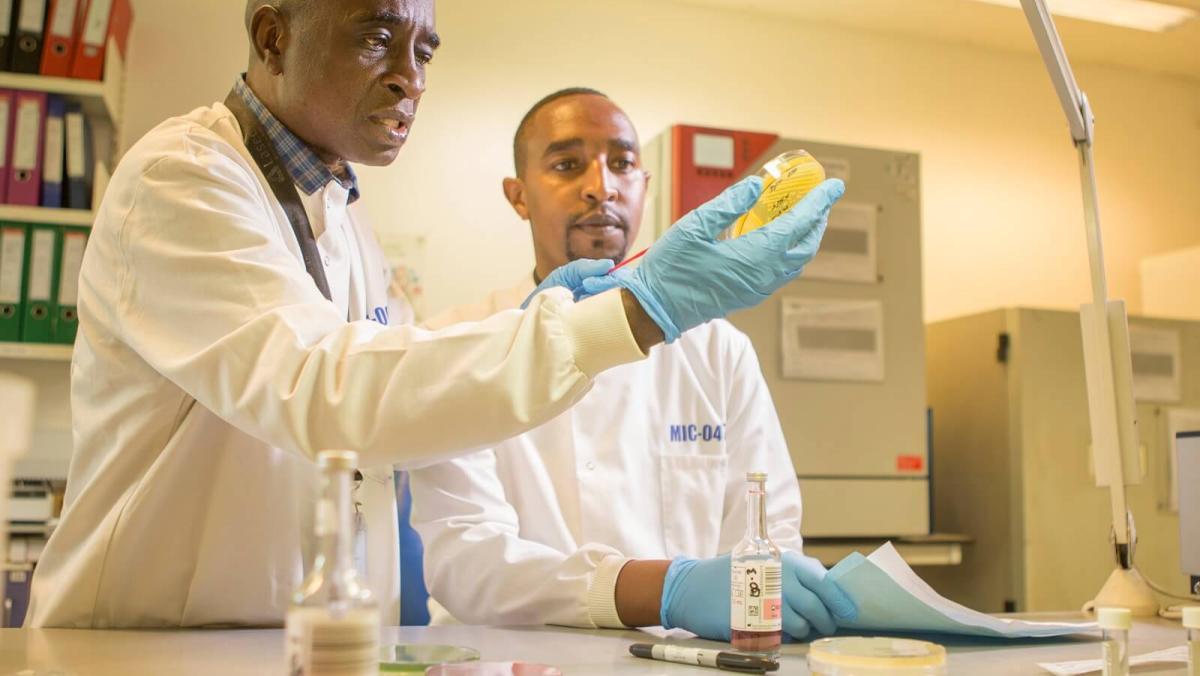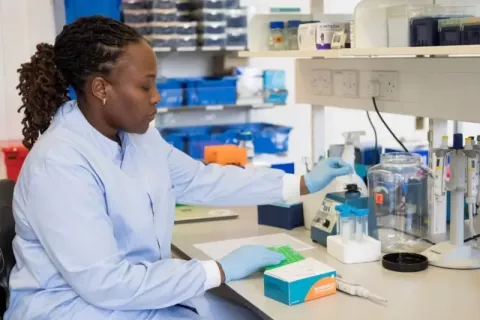Researchers from the Nuffield Department of Medicine, University of Oxford have identified patterns of antimicrobial usage among hospitalised children aged 2-23 months in sub-Saharan Africa and South Asia.
In many low- and middle-income countries (LMICs), resources to make precise diagnoses are often limited so clinical care guidelines are typically based on syndromes categorised by simple clinical signs.
However, sick children commonly meet criteria for more than one syndrome, and guidelines on when to escalate, de-escalate or stop antibiotics are limited. This uncertainty leads to overuse of antibiotics, which is a key driver of antimicrobial resistance (AMR).

Two doctors inspecting a bacterial culture. Image credit: Global Antibiotic Research & Development Partnership (GDARP).
Working with the Childhood Acute Illness & Nutrition (CHAIN) network, researchers collected data from a cohort of acutely-ill children at 9 hospitals between November 2016 to January 2019.
The study published in Open Forum Infectious Diseases revealed that of 3101 admissions, 91% of children admitted with acute illness received antimicrobials, two-thirds of whom were started within 48 hours of admission.
The findings found that 76% of children received Access antimicrobials (antibiotics with lower resistance potential), 35% received Watch antimicrobials (antibiotics that carry a high risk of developing resistance), and 0.3% received Reserve antimicrobials (last resort drugs used in critical causes).341 (11%) of admissions received antimicrobials without clear medical indication.
"The overall pattern of our findings suggests that antibiotics were likely unnecessary in a significant proportion of patients. However, healthcare providers face complex challenges when treating ill children in resource-limited settings.
These findings underscore the complex challenges healthcare providers face when treating ill children in resource-limited settings, and highlights the importance of accurate diagnostic tests and improved antimicrobial stewardship."

Prof Jay Berkley, Professor of Paediatric Infectious Diseases, Nuffield Department of Medicine at the University of Oxford, and lead author said: "This study provides insights into antimicrobial prescribing patterns in some of the world's most vulnerable populations."
The CHAIN network plan to continue their research in optimising the management and care of vulnerable children in resource-limited settings, making treatment more targeted to individual children’s needs and risks. The safety, efficacy, and cost-effectiveness of antimicrobial combination for acutely ill children in LMICs need to be tested in large randomised clinical trials.
